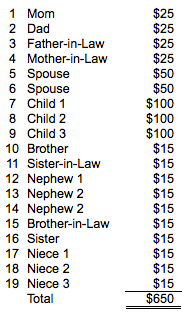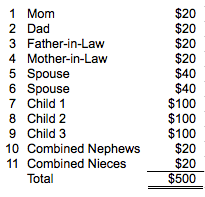Learning to save money is not easy for everyone. Let’s face it; we’re not all hardwired to love saving money. In a society that is mostly consumer driven, it doesn’t make sense to a lot of people that they need to save money when they really want the latest and greatest new HDTV.
People are taking vacations and buying new cars when they can barely afford to pay their electric bills. It just doesn’t make sense logically, but when you look at it from the way that parents are training their kids it only makes sense. The fact is that we all need to be saving money no matter what our income level is.
Even if you only make $25,000 a year, you need to be living below your means enough to be able to put that money in an emergency fund. Most experts recommend that you have at least a 6 to 9 month emergency fund in place in case life happens. But how do you save when you feel like your income is barely enough to cover your current expenses?
Take Care of Debt First
The first thing that you have to do is start to kill off any debt that you have. You may have to start doing some things on the side to
pay your debt down faster.
When you have bills hanging over your head, you’re never going to be able to save enough money to matter. Living with debt is one surefire way of experiencing “life” in the least enjoyable way.

In order to knock off your debt quickly, think of doing things like having a garage sale or selling items in an online auction. Even doing small things like this from time to time will help you knock some of your debt off so that you can start putting more money toward savings.
You might want to also speak with some of your credit card companies to see if you can settle on some of your credit card debt. If you owe $10,000 on a credit card, but you only make $20,000 a year then it’s obvious you’re never going to pay their credit card off.
Some creditors might be willing to make a deal with you, especially if you find yourself getting behind.
Savings Goals to Give You Direction
You also need to set some goals for your savings plan. What are you saving for exactly? Perhaps you’re saving for the down payment on your first home or for a vacation. Figure out how much you need to put back each week or month to meet your goals.
However, don’t just save for things that are tangible. Make sure that you’re saving for your future, your retirement, your kid’s college funds, etc.
Give yourself a time-frame in which you would like to make your financial goals. The best way to do that is set some short-term goals along with a long-term one. This will allow you to have some attainable goals along the way so that you’re not discouraged.
Think about how much you need to save out of each paycheck so that you can meet these goals. A good way to figure out how much are spending is to keep track of all your daily expenses. Write down how much you spend on gas, eating out, car payments, your cable bill, utilities, entertainment, etc.
Often, when people see how much money they’re throwing away on unimportant things, it makes it very easy to start saving.
Final Thoughts on Saving
No matter what income level you’re at right now, you can learn how to save money for your goals. It may be a matter of trimming your expenses, but you have to decide what your priorities are and what’s most important to you.
If you want to purchase a home, it might not be quite as important to you to go clothes shopping all the time or get your hair done on a regular basis. If you make the sacrifices now, your savings account will thank you for it.





